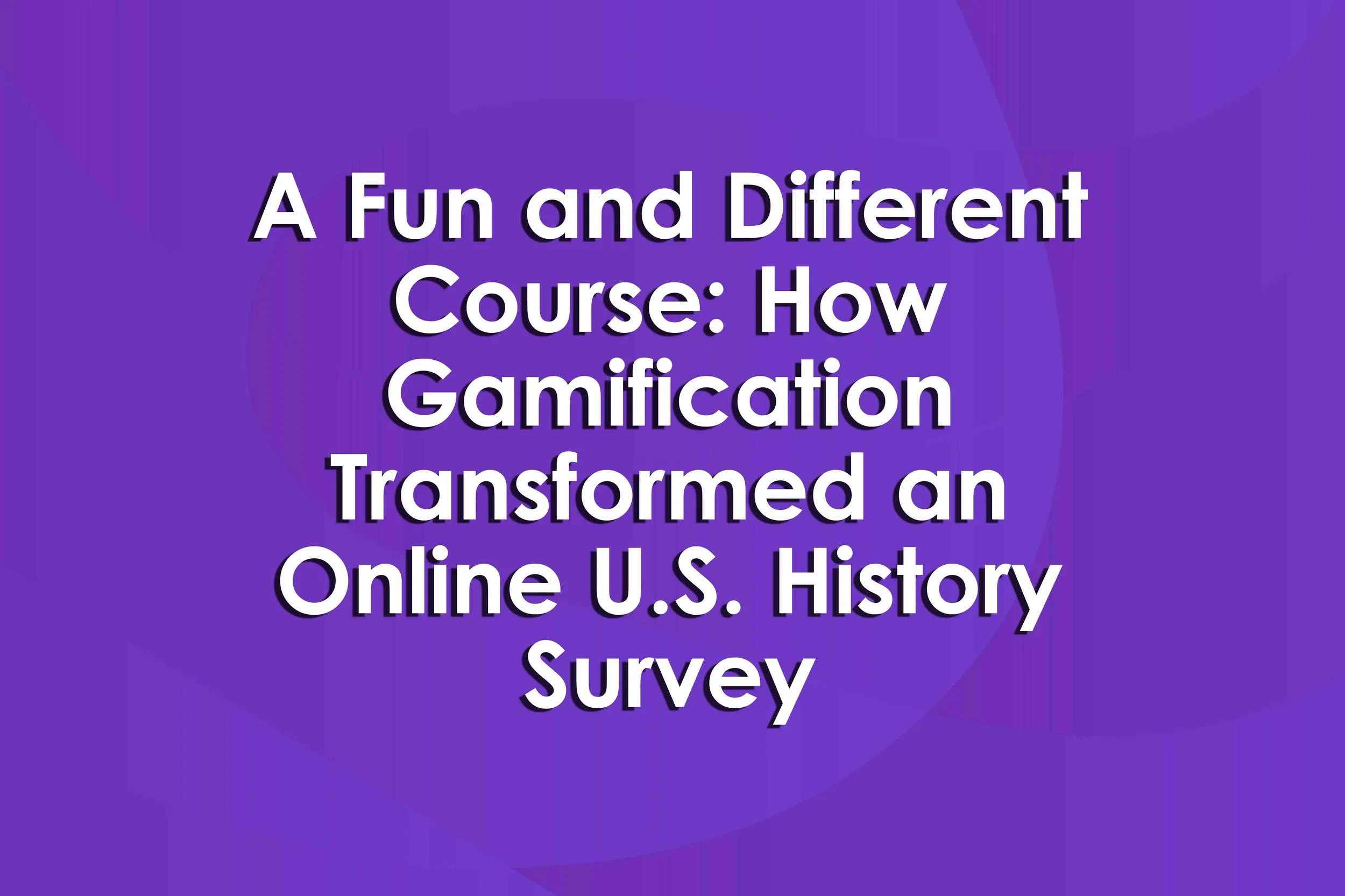A Fun and Different Course: How Gamification Transformed an Online U.S. History Survey
A Fun and Different Course: How Gamification Transformed an Online U.S. History Survey
A Fun and Different Course: How Gamification Transformed an Online U.S. History Survey
Chris Babits
Abstract
"In March 2020, the world changed forever when Covid-19 struck in full force. Without much notice, college instructors had to turn in-person classes into online learning opportunities. The words “asynchronous” and “synchronous” joined the educational lexicon of people who had only taught in-person courses. Technostress (or mental stress and psychosomatic illness caused by working with computer technology) affected instructors and students alike. Technology provided one immediate solution for continuing the work of education during a pandemic. But there were real concerns about educational technology. How could educators make meaningful learning experiences for students when they did not have the training to use learning management systems, multimedia production software, and video meeting programs? I was offered a teaching position at a large, land-grant university in the American West the same month Covid hit. The department chair told me that part of my upcoming teaching rotation would include creating an asynchronous section of HIST 1700: American History, a sweeping survey of history from “contact” to the present day. Since HIST 1700 is designated for non-majors, I was not particularly worried about content coverage. I had ample experience developing strong essential questions (EQs) that could frame content in ways advocated by curriculum theorists Grant Wiggins and Jay McTighe.1 Instead, my primary concern centered around motivating students to do well in an asynchronous online course. These concerns were not unwarranted. “Having lack of motivation,” Kübra Ertan and Selay Arkün Kocadete point out, “is one of the challenges that students face in online learning environments.”2 From the beginning, I understood that HIST 1700 had to look and feel different from anything I had enrolled in or taught in the past. My solution was to employ gamification in the asynchronous online survey. Defined as using game components in non-game contexts, gamification has been incorporated to various degrees in e-learning environments.3 In this article, I explain how I use gamification in HIST 1700 through a “choose your own grading adventure.” In the grading adventure, students focus on earning points as they pick-and-choose which assignments they complete. Currently, HIST 1700 has 350 assignments that student can complete to demonstrate their knowledge of American history. For each of the semester’s fourteen weeks, students can take low-stakes quizzes attached to course lectures, primary sources, and TED Talks. Most weeks have options for students to read and analyze academic articles published by prominent historians. In addition, students can submit written assignments, like a primary source analysis or a history meme, at various junctures in the semester. Like in a video game, easier tasks, such as watching a lecture and completing the accompanying quiz, are worth few points. Harder (and more time- consuming) assignments are worth more. Although students have immense choice as they navigate the grading adventure, they are ultimately faced with a specific quest—to earn at least 282 points by the end of the semester to earn an A. The “choose your own grading adventure” demonstrates how gamification increases student motivation to succeed in an asynchronous learning environment. Two pieces of further explanation are necessary to prove this claim. In the first, I explain what gamification is. In the second, I provide a detailed overview of the grading adventure. This section includes an overview of the assignment choices students have in the course. After setting this necessary context, this article employs qualitative data from evaluations of teaching to spotlight how students interpret their successes in the grading adventure. These qualitative data illustrate the importance of self-determination theory for comprehending motivation in gamified asynchronous online surveys like HIST 1700."
Reference
Babits, C. (2023). A fun and different course: How gamification transformed an online U.S. history survey. Teaching History: A Journal of Methods. https://openjournals.bsu.edu/teachinghistory/article/view/4273
Keywords
Gamification, Asynchronous Learning, Student Motivation

